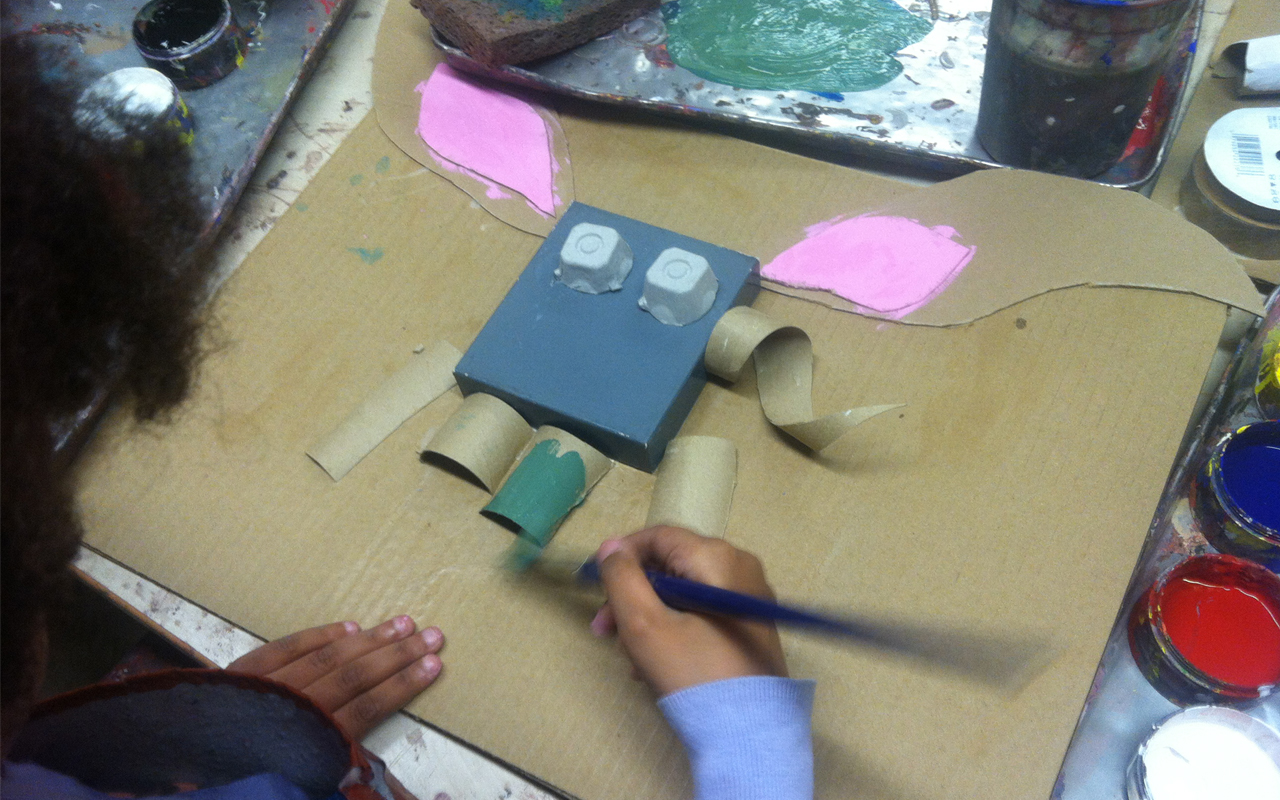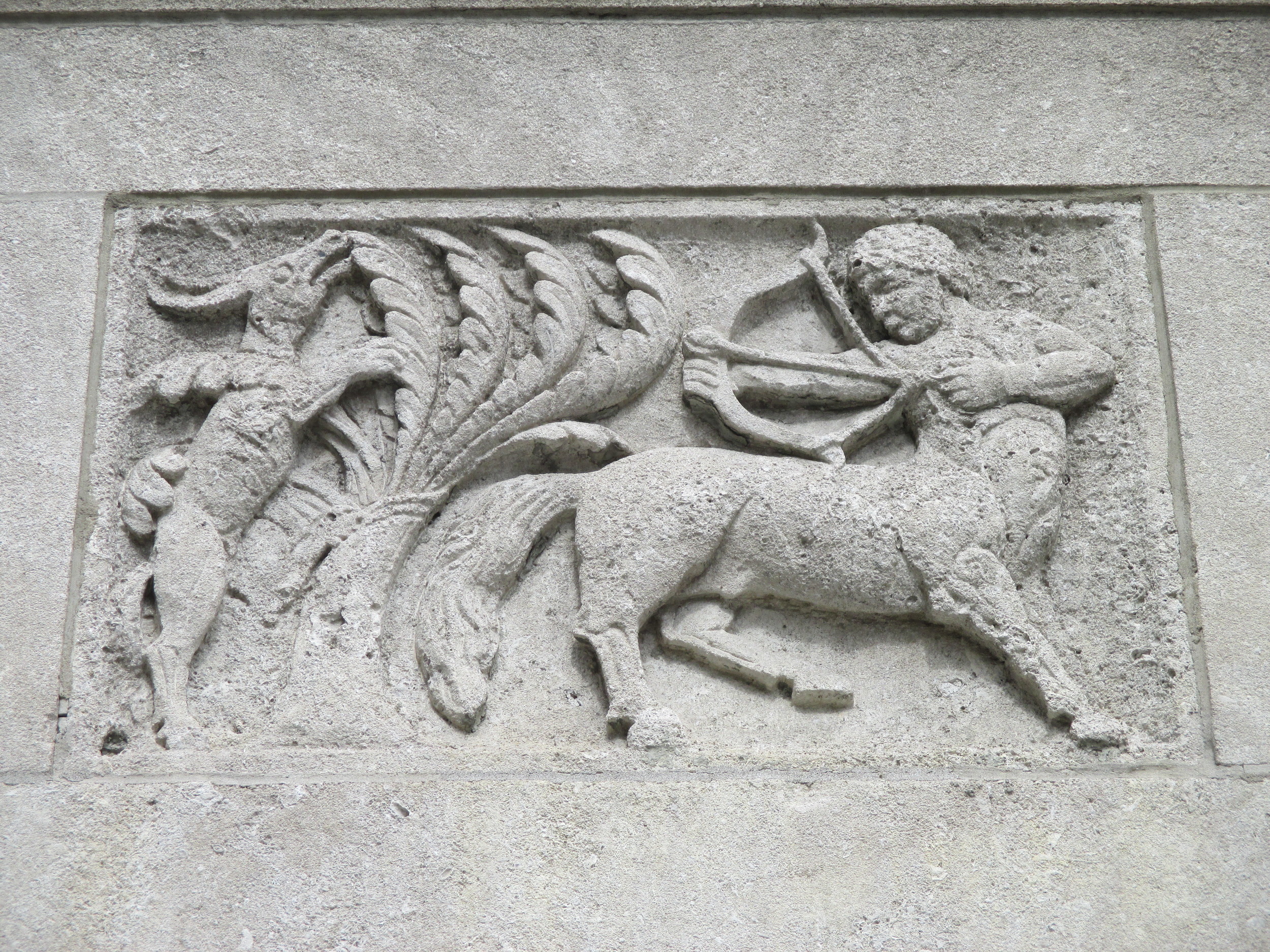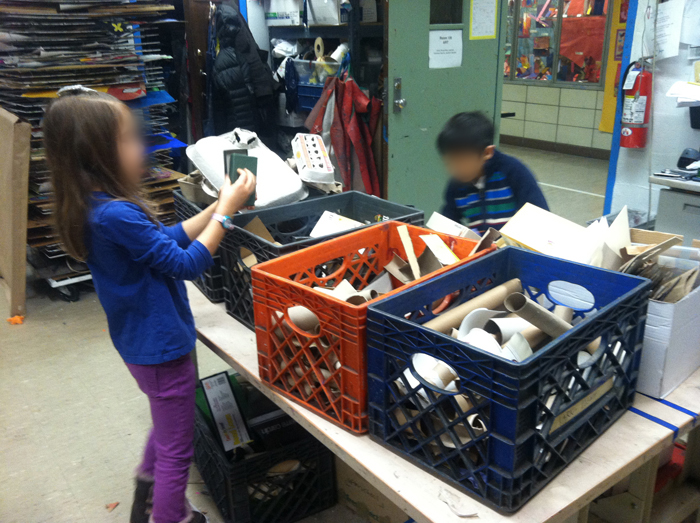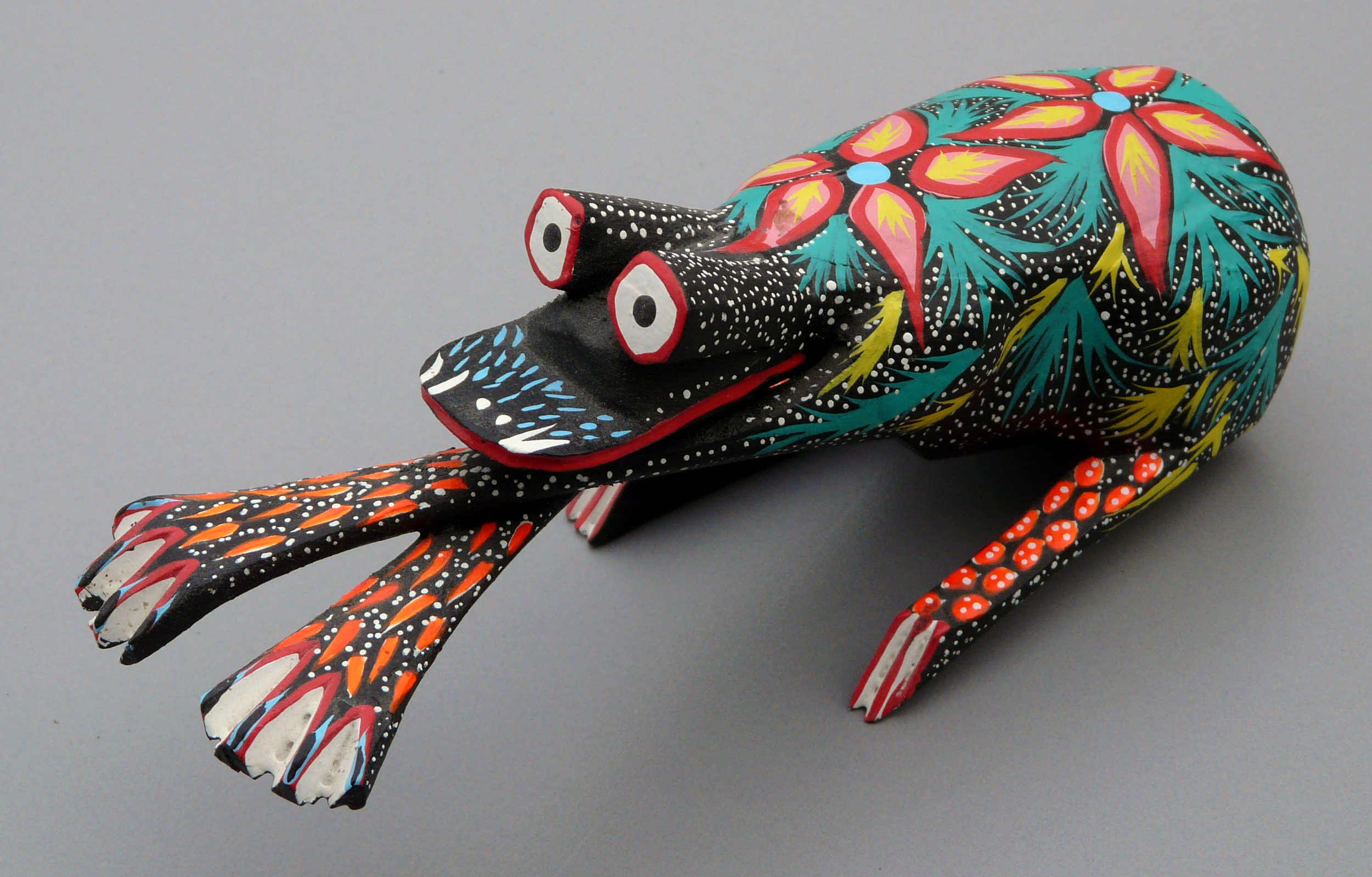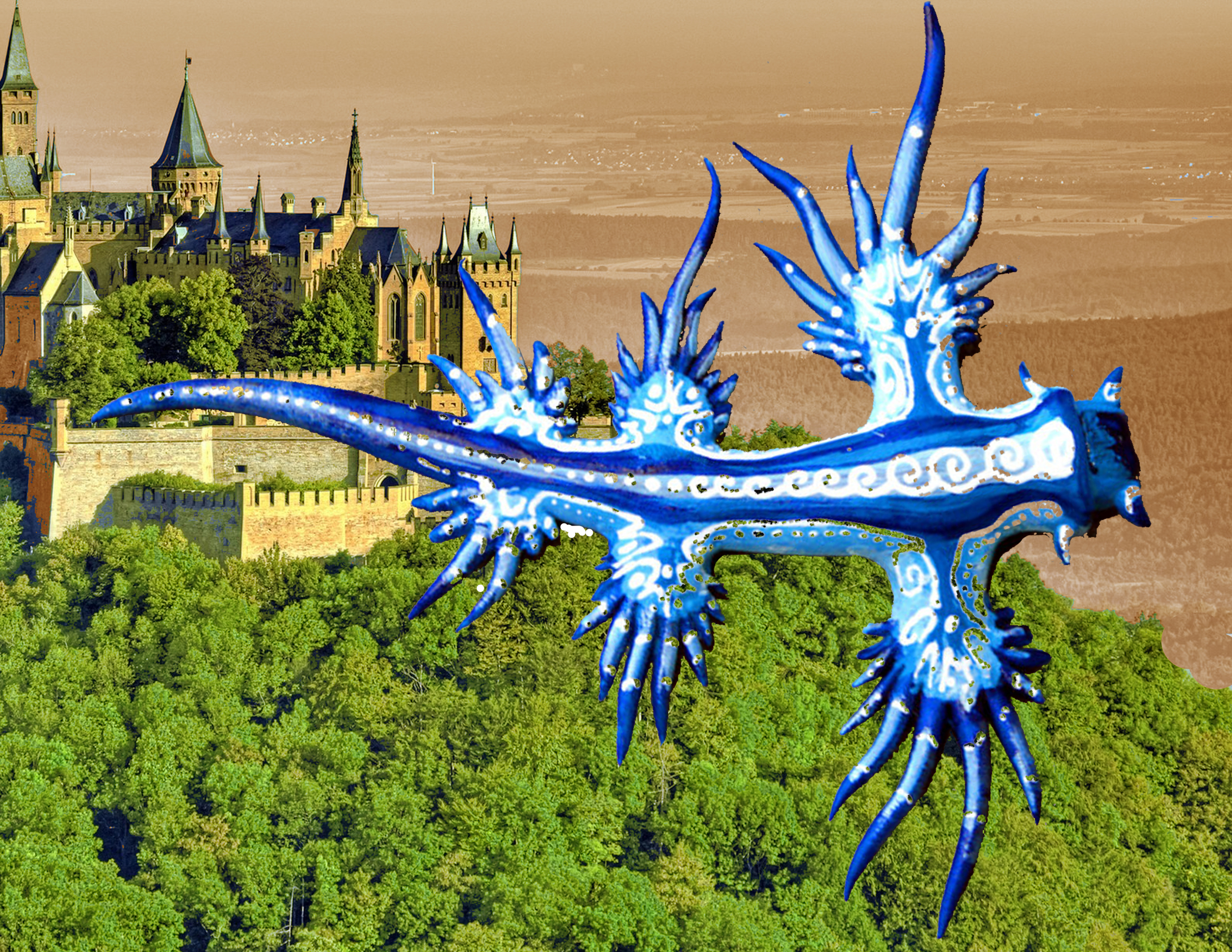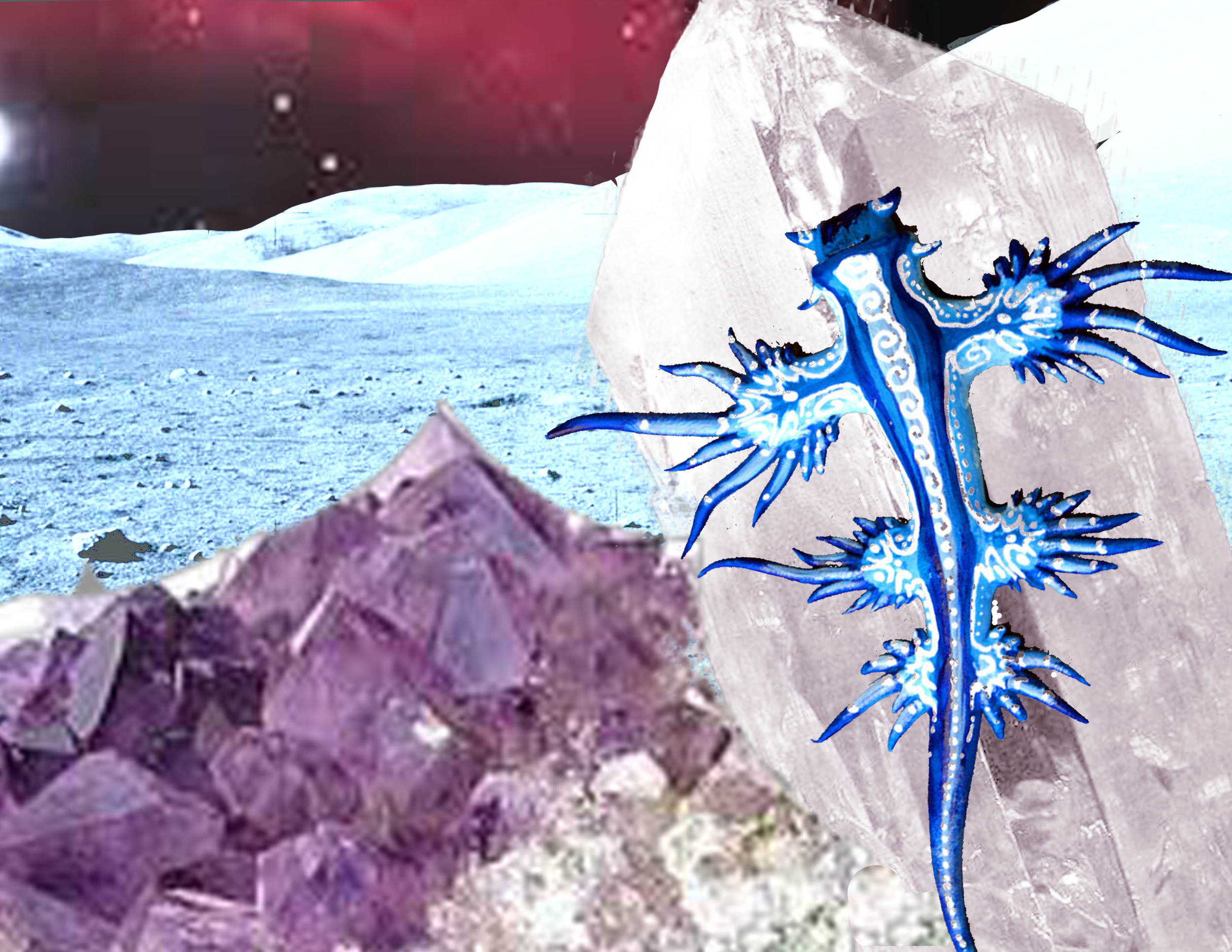second GRADE
MYTHICAL CREATURES
Essential Questions
How can I combine parts of different animals to invent a creature?
What colors can bring attention to the creature's important characteristics?
How can asking the “Five W’s” help me to imagine more details about my creature?
Overview
Students will use cardboard materials to create a relief sculpture of a mythical creature. To begin, they will free-draw while listening to stories about creatures from Greek mythology. Next, they will select and combine materials that match different animal parts of an invented creature. Before painting their sculptures, students will look at examples of “alebrijes,” creatures from Mexican folk art. They will think about how the artists use color to exaggerate features or to make designs “pop.” Finally, students will think about a proper setting for their creature, and paint a scene on the backboard. As an extension of this project, they will learn about the artist Trenton Doyle Hancock, who invents characters and asks questions about them to create stories and paintings. Students will work in pairs and use a worksheet to think of questions about each other’s mythical creatures. They will use their sculptures as inspiration to write a myth in their Language Arts class.
The following is a summary of this project design. Please view the full project design for complete lesson plans, including my consideration of student development and state learning standards.
LESSON 1: Storytime & Free Drawing
As a class, students will list examples of mythical creatures, and the teacher will write them on the board. The teacher will help bring out answers by asking students to think of different animals that make up hybrid creatures. Students will free draw (or paint) about any creatures they like (real, from stories, or ones that they invent). While they draw, the teacher will read brief origin stories about different creatures from Greek mythology.
LESSON 2: Relief Sculpture
Do Now: These are of “relief” sculptures. What do you think “relief” sculpture means? Hint: what do all these sculptures have in common? Students will look at images of a few different examples and define relief sculpture. They will begin to make a cardboard relief sculpture of a mythical creature. Students will be shown cardboard materials, including 3D recycled materials and 2D backboards. They will watch a brief demonstration on how to use sheath scissors to cut and use "L-Strips" to attach materials. Before they begin their sculptures, students will look closely at the different 3D materials. In guided dialogue, they will discuss shape and texture, and share ideas about what animal part each material could be. They will select, combine, and attach materials to invent the body of a mythical creature.
LESSON 3: Colors that “POP”
Students will learn about the Oaxacan-Mexican folk art tradition of alebrijes, sculptures of fantastical creatures. They will look at a few examples and respond to questions about the use of color in each. What body part do you notice first? What color or pattern gets your attention? Afterward, students will paint their creatures. In one-on-one dialogue, they will be asked about an important characteristic of their creature, and what colors or patterns they might use for it.
LESSON 4: Settings
Do Now: A setting is the surroundings in which something is set. What kind of story does this setting make you imagine about the creature?
After discussing their responses to the “Do Now” image, students will look at a few more pictures that show the same creature (a sea mollusk) in different settings. What does the setting make you think about the creature? What do you see that gives you that idea? Students will discuss characteristics of their mythical creature, and be guided to give examples of settings for it. They will complete their work by painting a setting onto the backboard of their sculpture.
Esther, 2002.
EXTENSION: Trenton Doyle Hancock & Creative Writing Activity
How can art make us curious? Students will look at their sculptures on display and briefly discuss what they wonder about any of the settings they see. After being introduced to a painting of a “Mound” by Trenton Doyle Hancock, they will share questions about what they wonder about this character. The teacher will write down questions on the board. Next, students will watch a two-minute video clip, in which the artist talks about “Mounds” and how he asks himself questions before inventing new details about them. Finally, students will work in pairs and complete a “Five W’s” worksheet to think of questions about each other’s mythical creatures. They will use this worksheet to help them write a creative story in their Language Arts class.
LEARNING OBJECTIVES
Students will learn that:
ARTISTIC SKILLS
The attributes of different materials (e.g. shape and texture of cardboard) can represent ideas about other things (e.g. characteristics of different animals)
Cool/warm or bright/dark color combinations will create designs with contrast that "pop"
"Zooming" into an environment can help to paint details and show a specific setting
VISUAL LITERACY
A relief sculpture is one that usually relies on a 2-dimensional background surface
In a portrait, the setting affects the way the viewer understands the person or animal depicted
Asking questions about what you see can help to think about and discover meaning in art
INTERDISCIPLINARY
When ancient Greeks invented creatures, they thought about the purpose of different animal parts
"Alebrijes" are Mexican folk sculptures of fantastical creatures, with bright colors and details
Asking the five W's (who, what, when, where, why) can help to brainstorm new ideas about a story
